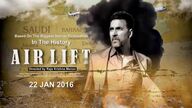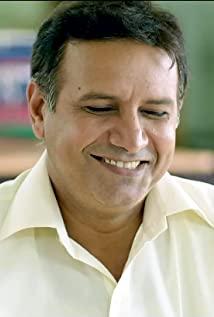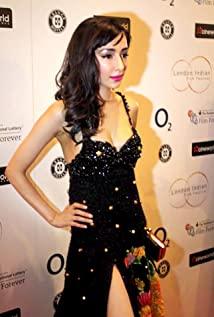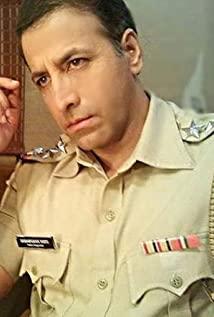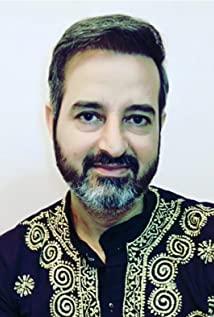I have never been to India. It is said that when I leave the airport in New Delhi, I will see a huge line of words: "Welcome to the world's largest democracy." India certainly deserves this title, and the population seems to surpass my celestial empire.
In fact, India today has a nation-building history similar to that of the heavenly dynasty. Counting further down is the British colonial era. At that time, we "backward peoples did not have the concept of a country. I always felt that India and Pakistan should be treated as one country." Their separation is also less than a few years longer than the separation between the motherland and Taiwan. The
South Asian subcontinent has a long history of civilization and a special geographical environment. For thousands of years, in addition to the most primitive aboriginal Negritos, there are primitive Australians. People, Dravidians, Aryans, Mongols, etc. different races and nationalities have migrated one after another.
So far, there are nearly two hundred nationalities on this subcontinent with more than 1,000 languages. And dialects (when this number is reached, it is impossible to classify statistics without controversy). Then they are a democratic country with a short history of founding a nation. It is conceivable that it
is basically difficult to form national identity. That’s it, for more than 20 years Previously, the Indians completed the largest evacuation of overseas Chinese in history, with more than 400 aircraft and 100,000 evacuees from Jordan.
In fact, from the beginning of the film, the male protagonist has been showing the weak national identity and does not listen to Indian music. Try to use English as much as possible to persuade his driver to become Kuwaiti as
soon as possible . Even if the Iraqis came, his first thought was to run to the UK. But then he stepped up and turned, especially when the driver was shot and the man was killed. The sense of homeland was finally awakened, and he became the Indian Moses with his chest.
The dramatic conflict in the whole film was actually not strong. The biggest threat to this group of Indian diaspora came from the Iraqi military officer who was like a monkey, and they also extorted some money. , Two bottles of foreign wine. In the end, a group of people arrived in Jordan with great strength. The bridge section where the national flag was raised was really a bit hard and concave, just like the Indian national flag made with special effects. In fact, this section is fine. Dealing with it better, there shouldn't be only one stubborn old man among the Indian diaspora.
However, there is a very interesting scene in this segment. The background music can be directly changed to "Fifty-six Clan and Fifty-Six Flowers": basically, this scene is a portrait of the Indian family. Let’s look at it one by one. :
Male protagonist: A typical white face, of course, is an Aryan in India. It belongs to the Hindustani tribe, which accounts for the largest proportion of the Indian population. In the Indian caste system, the upper layer of the skin is whiter. The Aryans only entered India from Asia Minor around 2500 BC, and they mixed with the local indigenous peoples and formed their current ethnic appearance. An anthropological basis for the formation of the caste system is that the differences between different races in the Indian subcontinent are indeed very obvious, which can be distinguished by appearance. Today's Bollywood stars are mostly of Aryan descent.
For example, Salman Khan of "Little Lori's Monkey God" last year is simply the Indian version of Cage:
And the goddess Anushka Sharma from "My God PK"
The leftmost family of three: It should also belong to Hindustani or Telugu. It is the most common modern Indian dress, probably to represent the largest of India Most people.
The headscarf behind the hero: This buddy is a Sikh, a Punjabi who believes in Sikhism. Basically, this image of a headscarf can be regarded as our stereotype of Indians. Seeing this headscarf, it will basically appear. The word Asan comes.
The white hat brother behind the male protagonist: It can only be seen that he is a Muslim. Although many Muslims have migrated to Pakistan in the partition of India and Pakistan, there are still a large number of Muslims left in India. The partition of India and Pakistan is the pain of the flesh and blood of the South Asian subcontinent. Almost every big Indian movie will be involved. In this movie, the father of the foreign ministry official mentioned his mansion in Lahar, Pakistan. Presumably this old man is also Indian. During the partition of Pakistan, he was forced to move out of Pakistan.
The right-most couple: Probably Marathi people who believe in Islam (not sure, please correct me). It is mainly distributed in Maharashtra State, but also in other states. It belongs to the Mediterranean type of the Europa race.
The last boy in the denim jacket: In fact, his Mongolian face made me notice the special features of this shot. It is very different from the Indians in our impression. It should be Assamese or Manipur. They are mainly distributed in the foothills of the Himalayas in eastern India and the lower reaches of the Ganges. Yes, their ancestors are from China's Yunnan and Burmese generations of Mongolians. The Assamese are descendants of the Dai people, and the Manipur people claim to be from the Central Plains. The Manipur people still have a strong Chinese complex. For example, they have always worshiped the dragon. Before the British colonized India, Manipur had always been an independent country, and now it is also fighting for independence. These people are looking at the Indian flag. , But this little brother's expression seems to have some deep meaning. Take a look at their national flags and girls:
At this point, I suddenly felt that the film should be given five stars. Although the film itself has many problems such as insufficient conflicts, insufficient details, stereotyped characters, etc., the concept of the whole film is still very well explained.
The films of the celestial dynasty have been made so lively in recent years, but the main theme of the film is still praising the Wei Guangzheng of a certain organization, so that the main theme has become a derogatory term, involving the identity of the family and the nation, and it is not that Wei Guang is saving China. It is a strong smell of Han chauvinism, or it is taking other Japanese people at the same time and relies on hatred to satisfy national self-esteem.
Values are more important than technology and money. If you have a lack of values, don't keep clamoring for output.
Well, long live the friendship between India and Pakistan, and long live the great unity of the Indian people.
View more about Airlift reviews






